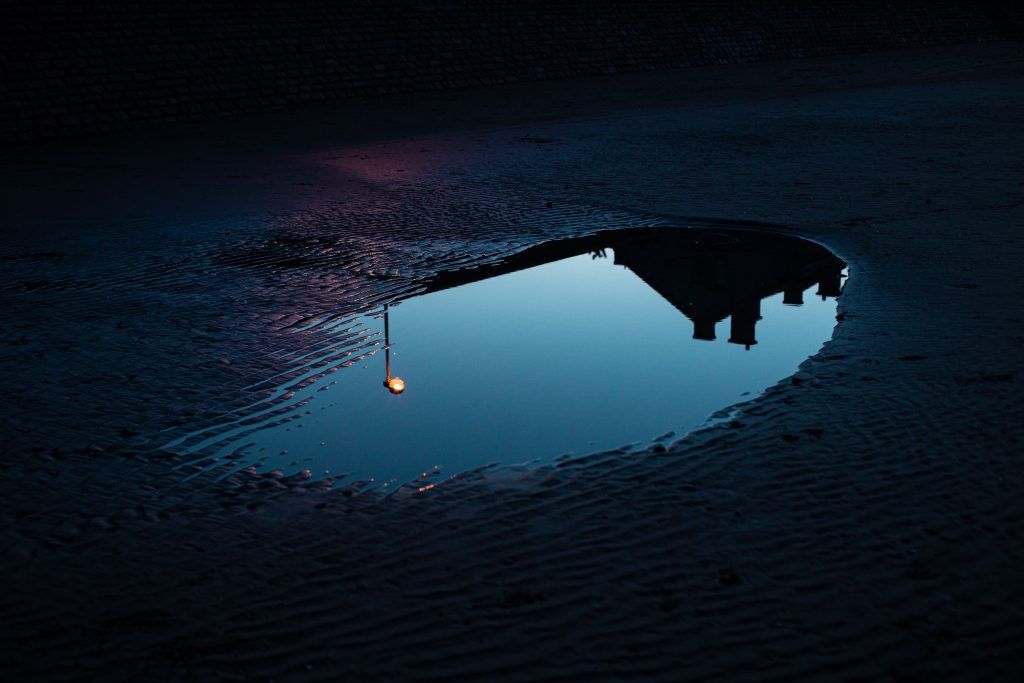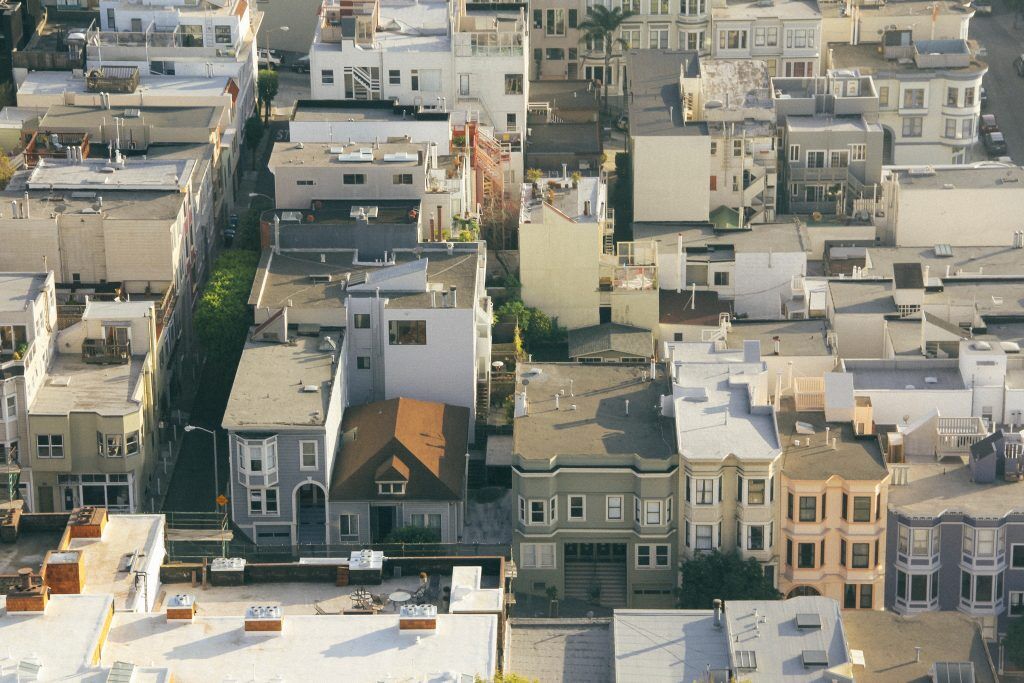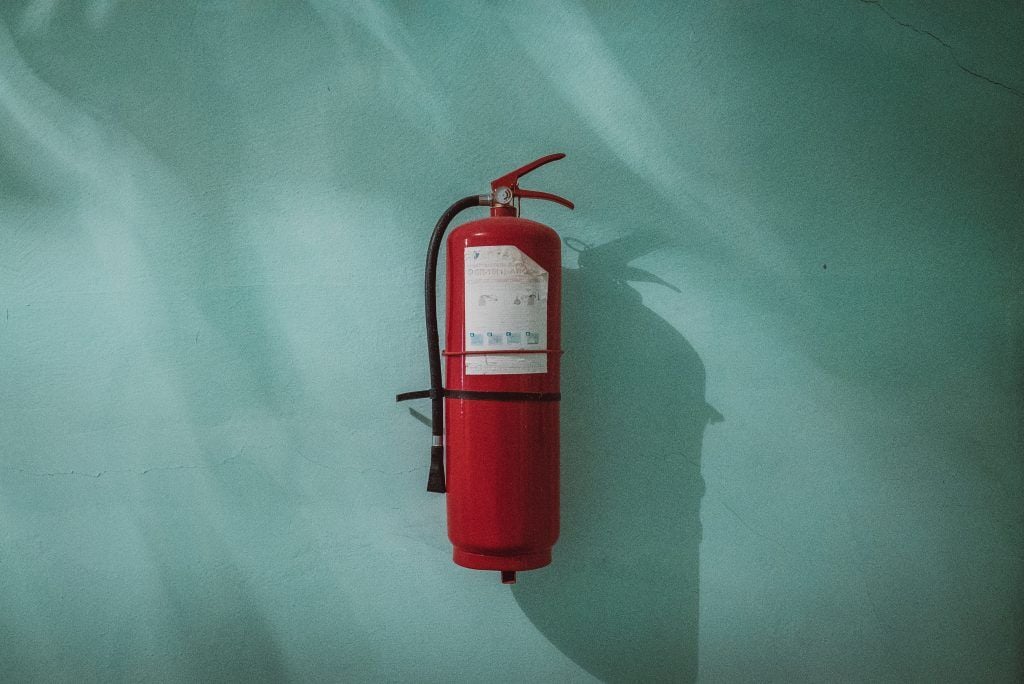Serving MD, DC & VA
Torch Down Roofing Guide: Materials, Installation, Benefits, and Disadvantages

Torch down roofing—also known as “torch on roofing”—is one of the most common types of roofing for flat and slightly sloped roofs. Torch down roofing consists of multiple modified bitumen membranes, applied with a propane torch.
This installation process gives torch down roofing a uniquely watertight seal, making it a great choice wherever water damage is a serious concern.
This watertight seal—and many other advantages offered by torch down roofing—makes it a popular choice for homes with flat roofs. But torch-down roofing isn’t for everyone or every home. If you’re trying to decide whether a torch down roof is right for you, continue reading.
We’ll cover what makes up a torch down roofing system, as well as its particular advantages and disadvantages, below.
In this article:
Two-Layer and Three-Layer Torch Down Roof Systems
There are two different types of torch-down roofing systems: two-layer and three-layer.
- A two-layer torch down roof consists of one base sheet and one smooth cap sheet.
- A three-layer torch down roof features the same base and cap sheets, as well as an additional cap sheet with a granulated surface.
Two-layer torch down roofs may cost less to install, but they don’t last as long or offer as many benefits as three-lawyer torch down roofs do. The granulated cap layer of a three-layer roof adds to the roof’s energy efficiency, fire resistance, curb appeal, and durability.
What is Torch Down Roofing Material?

Torch down roofing comes in the form of rolled sheets. Your Washington, D.C. roofing contractor will unroll each sheet individually during the installation process (two sheets for two-layer, three sheets for three-layer). You might be able to find a torch down roofing contractor in your area by searching for a rolled roofing installation company.
Each sheet of torch-down roofing material consists of multiple membranes stacked and adhered together. These are the membrane layers of torch down roofing material, from the bottom up:
Layer 1: Thermo-fusible film.
Layer 2: Modified bitumen.
Layer 3: Reinforced polyester.
Layer 4: Modified bitumen.
Layer 5: (For the third layer of a three-layer roof) Granulated mineral surface.
A compound known as modified bitumen makes up the second and fourth membrane layers of each sheet of torch-down roofing material. Bitumen is an asphalt compound. It is used in roofing and other construction applications like road construction and repair.
Modified bitumen is asphalt bitumen mixed with a plastic or rubber additive. There are two main types of modified bitumen membrane that are used to create torch down roofing material: Atactic Polypropylene (APP) and Styrene Butadiene Styrene (SBS).
Atactic Polypropylene (APP)
APP is a type of plastic used to produce modified bitumen for torch down roofing. APP modified bitumen membranes are especially flexible. They respond well to both high and low temperatures.
Styrene Butadiene Styrene (SBS)
SBS is a type of rubber used to create modified bitumen for torch down roofing. SBS modified bitumen membranes are also flexible, and they have a lower melting point than APP membranes. This means that SBS membranes can be used in torch-down roofing, as well as self-adhering and cold-processed roofing systems.
Torch Down Roof Application
Both two-layer and three-layer roof systems feature the same base and support components, applied in the same order. These are the steps your local commercial roofing contractor near you will take to install your torch down roof:
Step 1: Attach insulation
Insulation is especially important in colder climates, but it’s an essential part of any flat or low-sloped roof system. Insulation may be attached with screws and plates, or it may be adhered to using glue. This depends on the type of roof deck your home has and other factors.
Step 2: Lay down a moisture barrier
On top of the insulation, your Bowie roofing contractor will lay down a vapor barrier. This will help prevent condensation within the new roofing system.
Step 3: Install the overlay board
Next, the Bowie contractor will put an overlay board in place. This acts as a support surface to which the torch-down membranes will adhere. This step requires precision to make sure the overlay board is correctly installed. Otherwise, you could end up with a roof that isn’t level, causing water to pool.
Step 4: Apply the base sheet
Next, your Capitol Improvements flat roofing contractor will apply the first layer of torch down roofing material. They may attach the base sheet to the overlay board using a heat fusing method or adhesive.
Step 5: Apply the cap sheet
Next comes the second layer of torch down roofing material: the smooth cap sheet. As this sheet of material is rolled out—on top of the base sheet—the roofer will heat the underside of the cap sheet material with a torch.
As the heated cap sheet is pressed onto the base sheet underneath, the two will fuse and form a watertight seal. If installing a two-layer torch down roof, this is the final layer of rolled roofing material the contractor will apply. If installing a three-layer torch down roof, the contractor will install a third layer—with a granulated surface—in the same way.
Step 6: Install flashing
After applying the rolled roofing, the process is almost complete. To finish up, your Bowie roofing contractor will apply flashing around any features that penetrate the roof.
Benefits of Torch Down Roll Roofing

There are pros and cons to torch down roofing (torch-on roofing). Here are some pros:
Water resistance
The first job of any roof is to keep water out of the building below. With flat roofs, this job becomes much harder to do. This is especially true in regions where snow builds up on the roof and may melt off very slowly. Heat-sealed seams and ultra-waterproof membranes make torch down roofing one of the most highly water-resistant flat roof systems.
When installed correctly by a Bowie roofing professional, torch down roofing prevents water from collecting and pooling on the roof and promotes drainage. Torch down roofing is also ideal in protecting structures from damage from snow buildup.
Flexibility and durability
One of the most significant benefits of torch down roofing is its flexibility. The modified bitumen sheets expand and contract as the temperature changes, without cracking or splitting. Where other roofing materials are rigid and may be damaged by changing temperatures, torch-on roofing works well in any climate. This flexibility makes torch down roofing durable and long-lasting.
Torch down roofing also has a consistent thickness (about 3-4 mm) across the entire roof, unlike other roofing materials that may vary in thickness. This conformity across the roof surface makes for a more durable roof.
Energy efficiency
Torch down roofing provides protection against UV rays and heat, especially with the added cap layer included in three-layer roofs. The surface of your torch down roof can help lower your cooling bill in hot weather.
Lifespan
The lifespan of a torch down roof is one of its main selling points, at 15 to 20 years. Torch down roofing is more long-lasting than some other types of flat roof systems. This is due to its flexibility in hot and cold temperatures, as well as its resistance to water damage.
Fire resistance
Especially with a granulated cap layer, torch down roofing can be highly fire resistant.
Less harmful fumes
If you’re deciding between a torch down and mop-on roof coating, one factor to consider may be the fumes. Torch down roofing isn’t free from unpleasant smells, but it emits much less harmful fumes than mop on asphalt roofing. With mop on roofing, your roofer may need to take more breaks to ensure they aren’t breathing in too much.
Easy repairs
Last, but not least, torch on roofing is very easy to repair when compared to other roofing materials. Because it rolls on and can be sealed relatively quickly, the process is less intensive and less expensive than fixing different types of roofs.
Disadvantages of Torch Down Roofing

Here are some cons to torch down roofing:
Fire hazard
The primary downside of torch down roofing is that it is applied with an open flame and, therefore, always poses some level of fire hazard.
As a construction material, modified bitumen is highly fire-resistant. However, if overheated during the installation process, the compound can break down and become flammable. Additional flammable materials, such as the wood frame of a house (and any residual sawdust from construction or repairs), or dry foliage add to the potentially hazardous nature of torch down roof application.
When you work with a professional, licensed, and highly trained Bowie roofing contractor, all of these factors will be thoroughly inspected and resolved before the installation of a torch down roof. This makes the process relatively risk-free when you work with a roofing professional. Torch down roofing is not a safe DIY project!
Seam failure
If the seams of torch down roofing material don’t seal completely, it can result in roof leaks. This is less common with a three-layer roof but may still occur. If this does happen, a repair to seal the roofing seam is relatively quick and easy. This is why we prefer TPO flat roofing in Washington DC roof applications.
Trapped water
It is possible for water to get trapped between the layers of rolled roofing during installation or repair. For this reason, torch-on roofing should only be applied or repaired during dry conditions.
Not resistant to scuffs and tears
A torch-down roof may be highly flexible and durable, but it isn’t impervious to scratching and tearing. The waterproof seal of a torch down roof is essential to its performance, and if it gets torn or scuffed, the roof system is compromised. This can be avoided with regular roof maintenance, inspection, and minor repairs when needed.
Disadvantages of a flat roof
Torch on roofing is a flat roof system, which means it must be highly water-resistant and durable. However, even with the most durable flat roof system, you have to make sure to maintain and inspect your Bowie flat roof regularly. Flat roofs are more prone to pooling water and piling snow, as well as built-up debris.
If you have a flat roof, make sure you have it inspected by a certified roofing professional to make sure it is stable enough to withstand torch-down roof application, as well as everyday wear and tear.
Cost of Torch Down Roofing

The cost of a torch down roof depends on the Bowie contractor you choose and the quality of the components they use. As with many other types of construction projects, there are lower-quality torch on roof materials and higher-quality torch-on roof materials.
With higher-quality torch-down roll roofing, you may have to pay a little bit more at installation. However, you will also get a longer-lasting roof that needs fewer repairs during its lifetime, which will end up saving you money, in the end.
For a quote on your torch down roofing project in the DC area, call Capitol Improvements at 301-769-6909
Capitol Improvements offers flexible financing with Enerbank to help you with your torch down roof and other projects.
Is Torch Down Roofing Right for You?
A torch-down roof system works best for slightly pitched roofs, where flexibility and water resistance is your primary goal. Torch down roofing stands up to harsh elements, including high and low temperatures, heavy rain, and even piled-up snow.
Torch down roofing must be installed by a roofing professional and isn’t something you can take on as a DIY project. However, if you want a roof that is long-lasting, highly durable, and easy to repair, torch down may be a good option for your flat roof. Contact an experienced torch-down roofing contractor near Washington D.C. today!
If you’re looking for a torch down roof in Maryland, Washington D.C., or Northern Virginia, we have torch-on roofing experts ready to serve you! Get a free quote here.
Raining this week
It’s a good time to leakproof your roof.
Minor leaks can turn into major issues quickly, don’t wait until you have to replace more than your roof. Request your free quote to quickly get a roof repair or a new leakproof roof.
